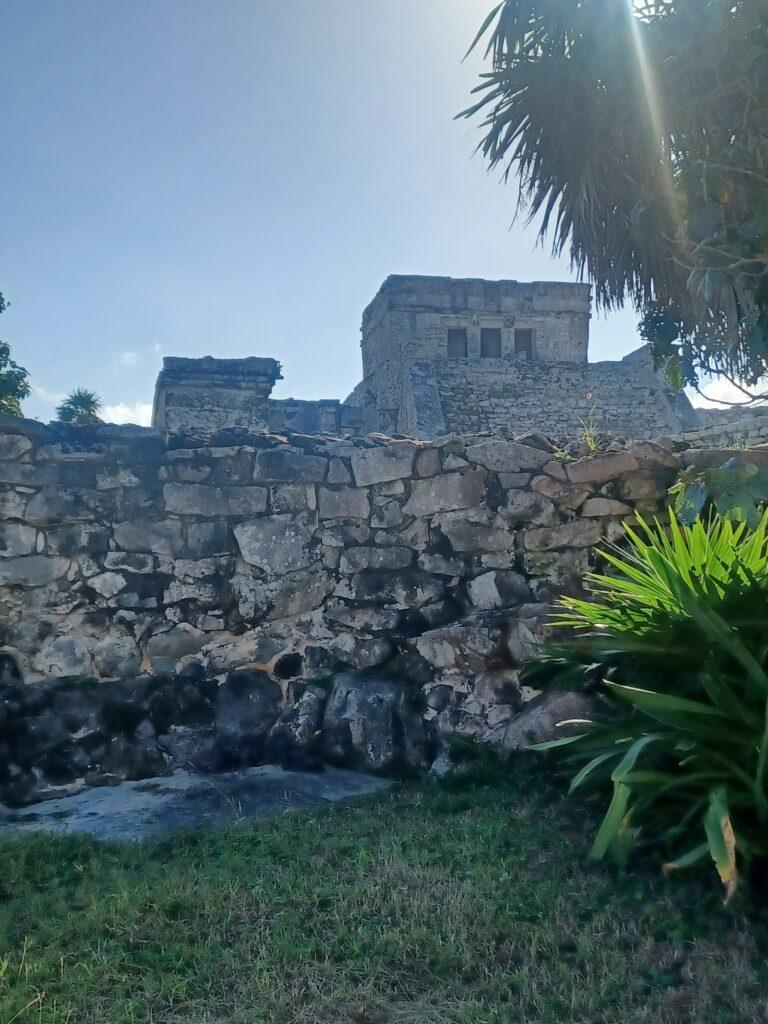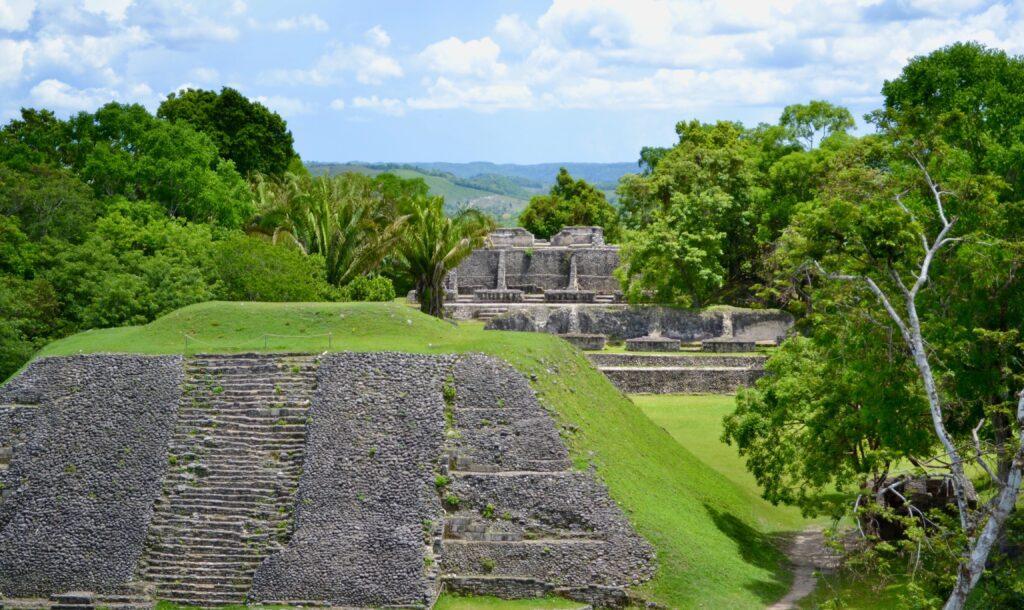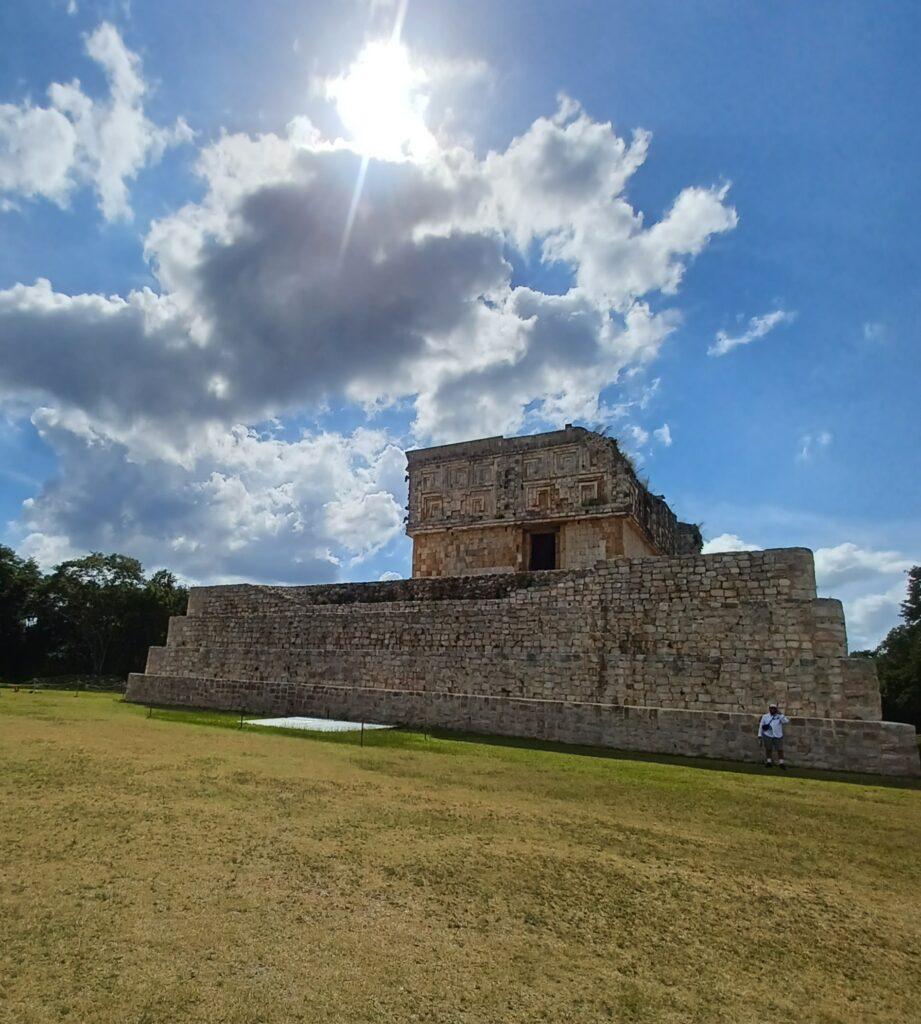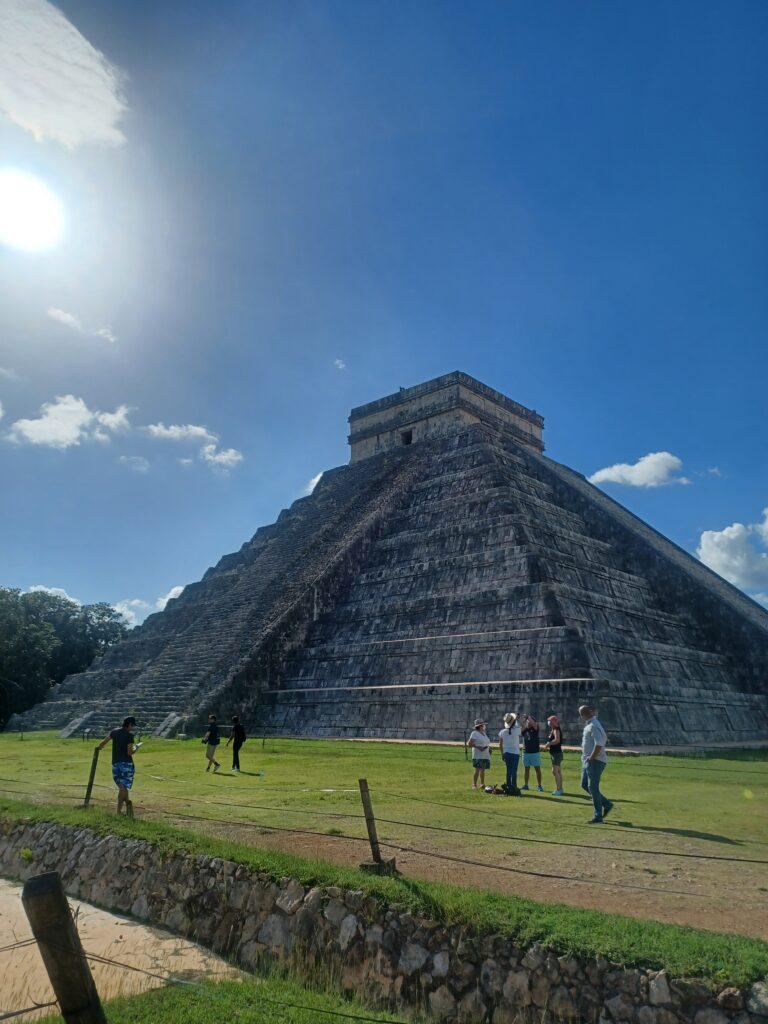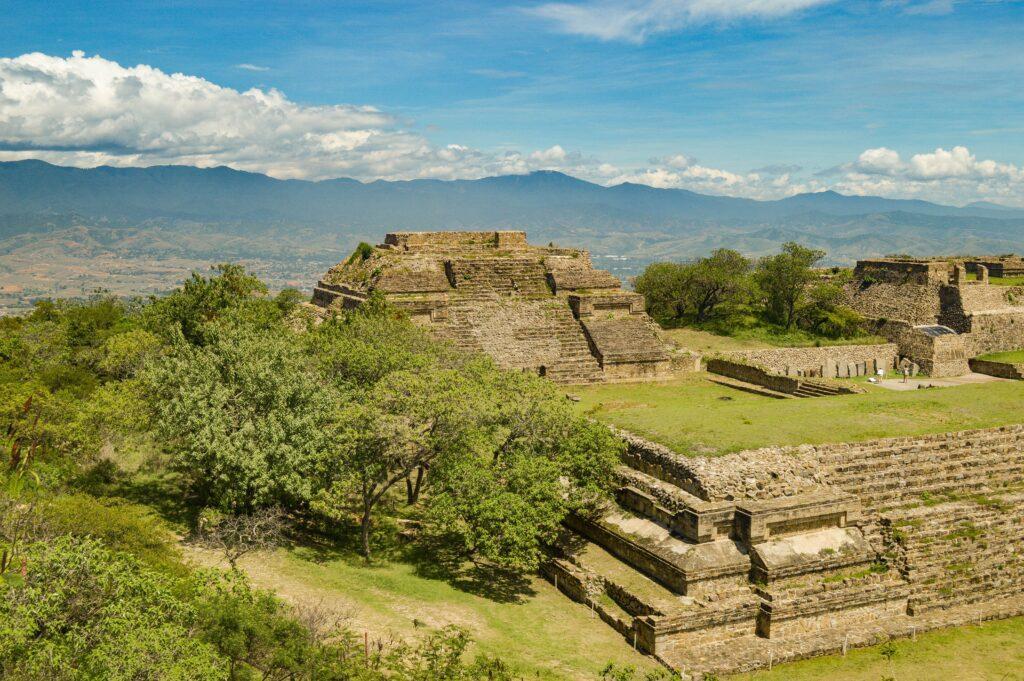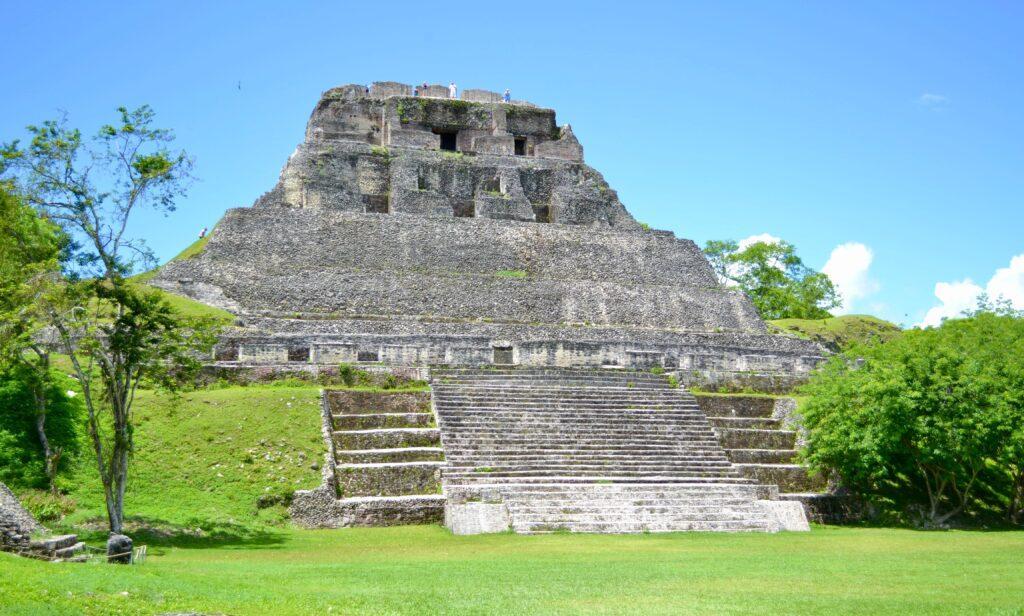Mayan Ruins
All about the ruins: Why you’d want to visit them, how you can see them, and when it’s the best time to go.
Why Mayan Ruins?
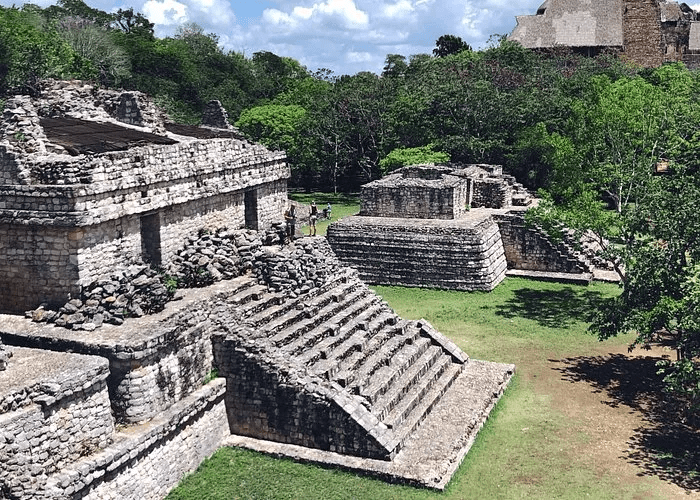
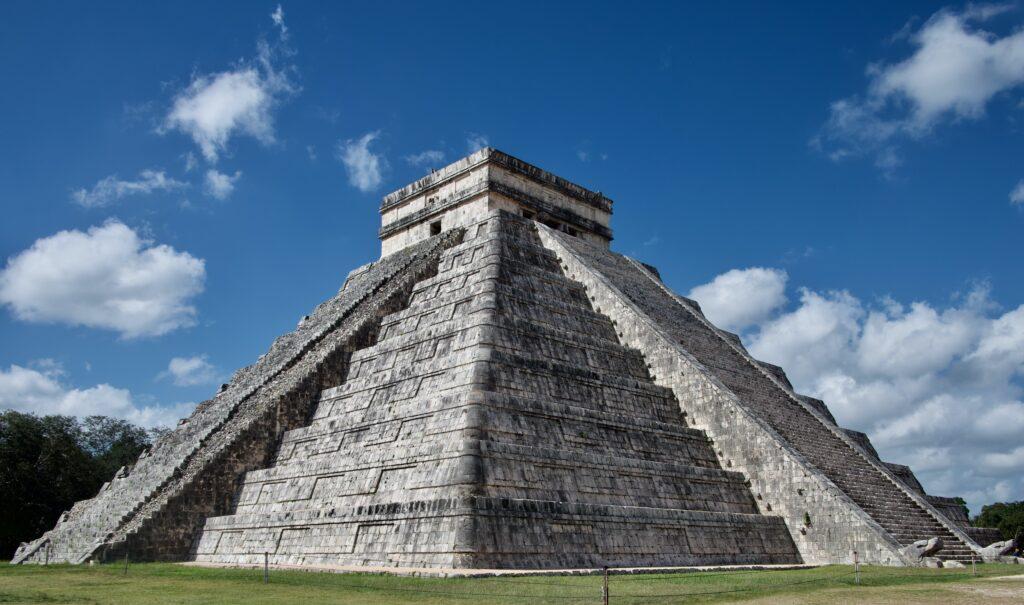
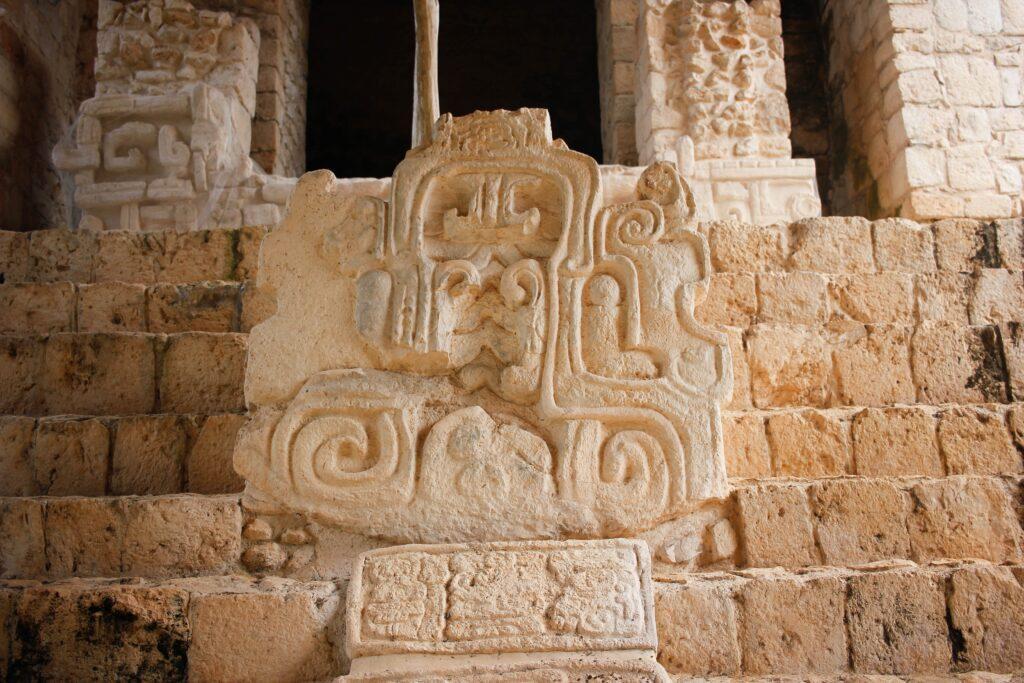
Mayan ruins are the remains of ancient structures and cities that were built by the Mayan civilization, which flourished in Mesoamerica (primarily in present-day Mexico, Guatemala, Belize, Honduras, and El Salvador) from about 2000 BC to the 16th century AD.
The Mayan civilization was one of the most advanced and sophisticated in the ancient world, and their ruins provide important insights into their culture, society, and way of life.. These ruins are a window into the past and offer a unique opportunity to learn about the history and customs of the Mayan people with their intricate stonework, elaborate murals, and hieroglyphic writing system.
The ruins are known for their striking architecture, including massive stone temples, pyramids, and other structures that were built using sophisticated engineering techniques. These structures are a testament to the skill and creativity of the Mayan people in architecture, engineering, and art.
They offer insight into Mayan religious beliefs, political organization, social structure, and technological achievements, such as their impressive knowledge of astronomy and their advanced building techniques.
The Yucatan Peninsula is home to some of the most beautiful natural landscapes in Mexico, including lush jungles, crystal-clear cenotes (natural sinkholes), and stunning beaches. Visiting the Mayan ruins provides an opportunity to explore these incredible natural wonders as well.
Along with the landscape, you’ll be able to enjoy the vibrant and unique culture that is influenced by both the Mayan heritage and Spanish colonialism. Visiting the ruins provides an opportunity to learn about and experience this rich cultural heritage firsthand.
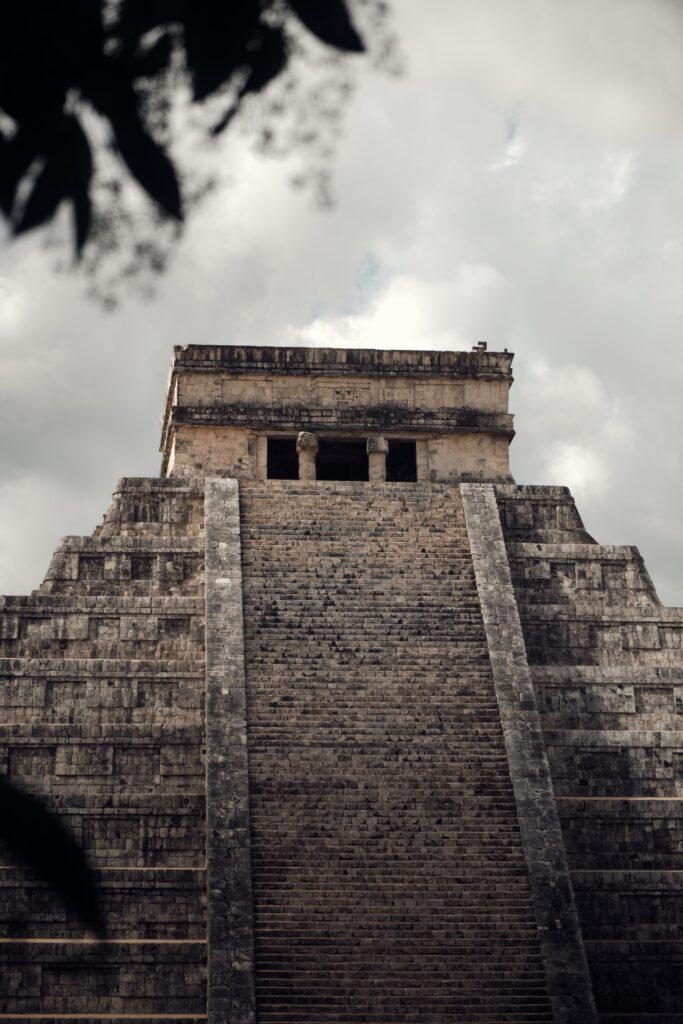
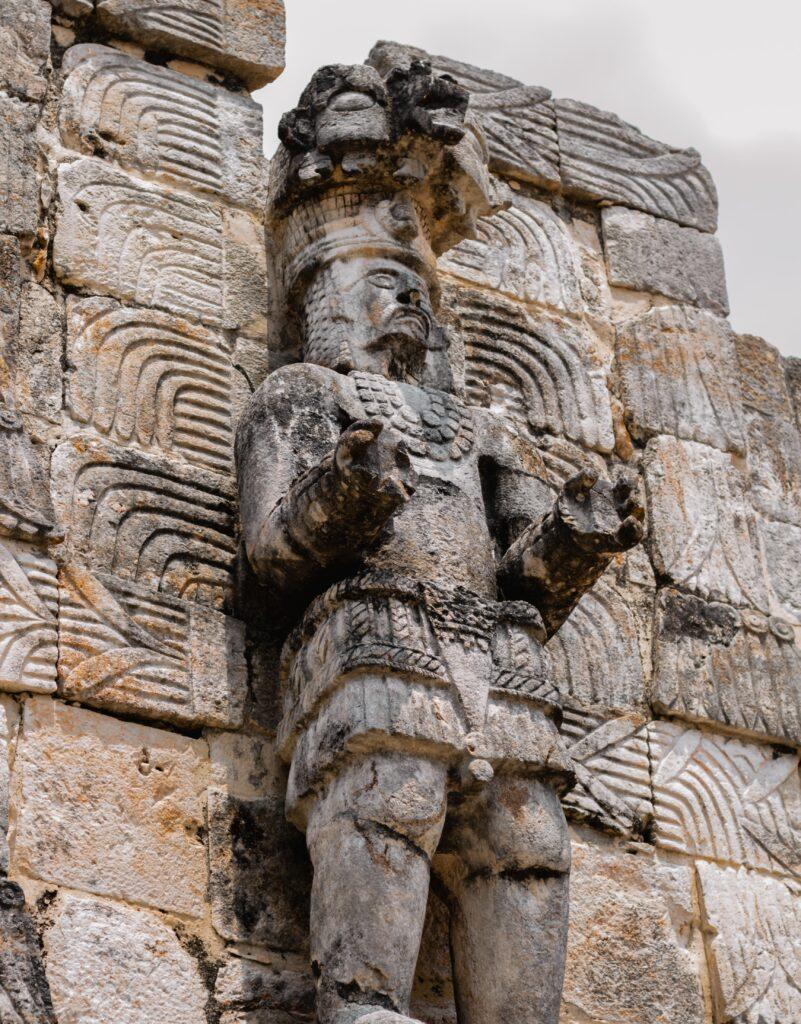
How to see them:
The best way to see the Mayan Ruins is dependent on how much time you have and how many ruins you want to see. The two most popular and easiest ways are to do a cruise or an overland trip. This will allow you to visit the most amount of locations with the cheapest overall expense.
There are many cruise options, but our favorite makes a stop at multiple locations around the peninsula. Along with seeing many different ruins, you’ll also get to experience different countries and cultures. We recommend a cruise that heads to Mexico, Belize, Honduras, and Costa Maya.
There are two ways to do an overland trip. You can either fly in and out of a central location, or you can start in one location and then traverse through all of the ruins and head home from your last destination.
Another popular option, is to just see a few sites while you are visiting the popular peninsula in Cancun or Cozumel.
Whether you are trying to see every ruin the area has to offer, or are just hoping to see one or two while on your vacation, a guided tour is an excellent way to see the Mayan ruins, as it allows you to learn about the history and culture of the ruins from an expert guide. Most tours include transportation, entrance fees, and a knowledgeable guide who can provide insight and context.
Visiting the Mayan Ruins is quite popular, and we offer multiple group trips to share the cost and enjoy new friends as you experience the culture and history of the ruins.
Best Time to Go:
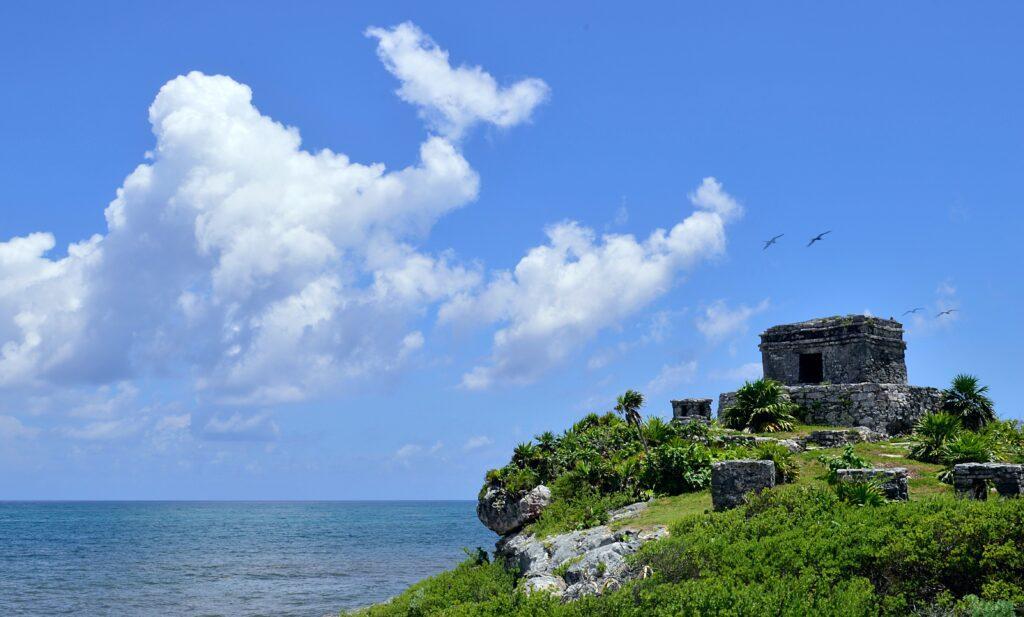
When is the best time to go to the Mayan Ruins? That depends on your priorities and how you plan to see the sites.
If your priority is to have good weather then we would recommend December to April. This is when the weather is dry and comfortable. The Yucatan Peninsula has a tropical climate with hot and humid summers and milder winters. However, this is also the peak tourist season.
If your priority is to avoid crowds and you’re on a budget, we would recommend May to November. This is the rainy season, but many times the rain doesn’t hamper your ability to see and enjoy the ruins and you will be able to see them sometimes better because there are fewer crowds. If rain scares you away, then try to visit early in the morning during tourist season..
Best of both worlds tends to be April or November. You get fairly good weather, and not quite as many crowds as December or January.
Consider Festivals. The Yucatan Peninsula is the most popular destination to visit Mayan Ruins and it is also home to many festivals and celebrations throughout the year, if you’d like to catch one on your trip.
While the dates change every year, if you go in late February and early March you can catch Carnaval in multiple areas. The first of November you’ll catch two: Day of the Dead and Hanal Pixan.
But the most popular for the ruins is around March 20 and Sept 21. This is the equinox and you’ll want to head to Chichen Itza where the festival will be showcasing the alignment of the sun with the temple’s architectural features.
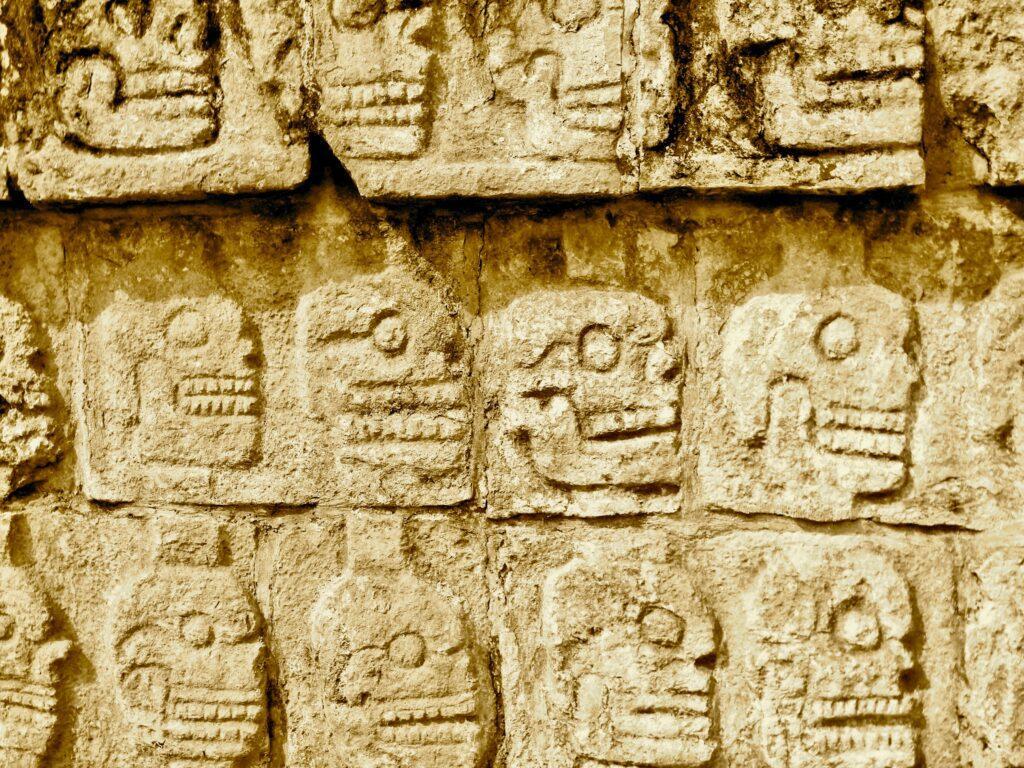
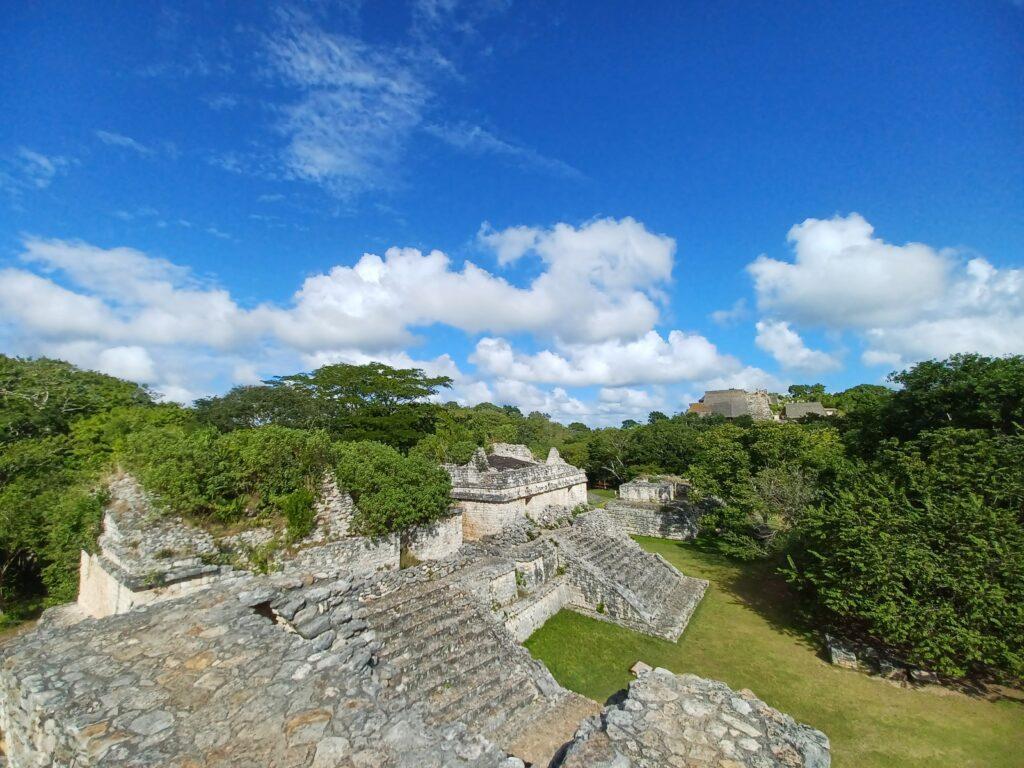
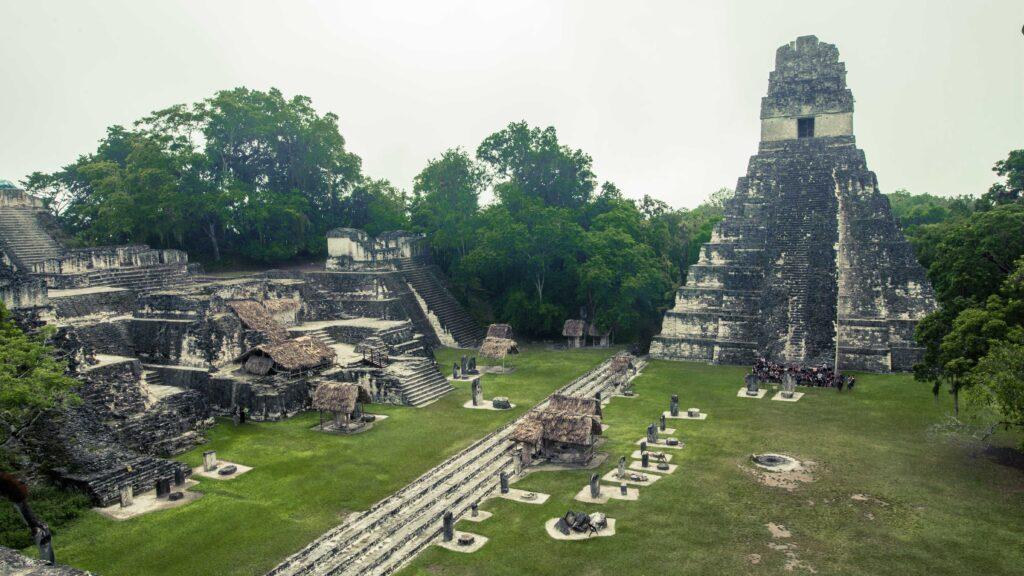
Notable Ruins by Location:
Mexico
Chichen Itza: Located in the Yucatan Peninsula, Chichen Itza is one of the most famous Mayan ruins in the world. is a UNESCO World Heritage site and was once a major economic and political center for the Mayan civilizatio. It features several impressive structures, including the Temple of Kukulcan, the largest ball court in Mesoamerica, and the Sacred Cenote, a natural sinkhole that was once used for human sacrifices.
Tulum: Located on the Caribbean coast of the Yucatan Peninsula, Tulum was once a major trading port for the Mayan civilization and is home to some of the most well-preserved Mayan ruins in Mexico. It features several impressive structures, including a castle and a temple.
Palenque: Located in the southern state of Chiapas, Palenque is a large Mayan city that was known for its elaborate architecture and intricate carvings. It features several impressive structures, including the Temple of the Inscriptions and the Palace.
Uxmal: Located in the Yucatan Peninsula, Uxmal is another impressive Mayan city that features several well-preserved structures, including the Pyramid of the Magician and the Governor’s Palace. Known for its impressive architecture and intricate stone carvings that are considered some of the finest examples of Mayan art.
Coba: Located in the Yucatan Peninsula, Coba is a large Mayan city that was once home to over 50,000 people. It features several impressive structures, including the Nohoch Mul pyramid, which is one of the tallest in the region.
Ek Balam: Located in the Yucatan Peninsula, Ek Balam is a well-preserved Mayan city that features several impressive structures, stucco reliefs and sculptures, including the Acropolis and the Ball Court.
Edzna: Located in the Campeche state, Edzna was once a thriving city and is known for its impressive architecture, including the Temple of the Five Stories and the Great Plaza.
Guatemala
Tikal: Located in the northern part of the country, Tikal is one of the most impressive and well-known Mayan ruins in the world. The site features towering pyramids, massive plazas, and intricate carvings and inscriptions.
Yaxha: Located near Tikal, Yaxha is another impressive Mayan site that features a number of large pyramids and plazas, as well as an expansive view over a nearby lake.
El Mirador: Located in the remote Petén region of northern Guatemala, El Mirador is an enormous Mayan city that was once home to tens of thousands of people. The site features massive pyramids, plazas, and other structures, and is considered one of the most important and impressive Mayan ruins in the world.
Quirigua: Located in eastern Guatemala, Quirigua is known for its impressive collection of intricately carved stelae, which feature detailed images and hieroglyphic inscriptions.
Iximche: Located in the highlands of western Guatemala, Iximche was once an important political and religious center for the Mayan civilization. The site features a number of impressive structures, including several large pyramids and temples.
Honduras:
Copan: Located in western Honduras near the Guatemalan border, Copan is one of the most important Mayan archaeological sites in Central America. The ruins include impressive sculptures, hieroglyphs, and a large ball court and are a must-see destination for anyone interested in Mayan archaeology and history.
Los Naranjos: Located in the Río Platano Biosphere Reserve, Los Naranjos was a significant Mayan city during the Classic period and features impressive architectural structures, including a ball court and a large plaza.
El Puente: Located in the western part of Honduras, El Puente is a small but well-preserved Mayan site that features a large palace complex, ceremonial center, and impressive stucco sculptures.
Pijol: Located in eastern Honduras, Pijol is a lesser-known Mayan site that was once a regional center for trade and commerce. The site features impressive architecture, including several pyramids and a large ball court.
Costa Maya:
Chacchoben: This Mayan ruin is located about an hour’s drive from Costa Maya and features several well-preserved pyramids and ceremonial platforms. Chacchoben was a significant Mayan city during the Classic period and was rediscovered in the 1940s.
Kohunlich: Located about 2 hours south of Costa Maya, Kohunlich is a lesser-known Mayan site that features several impressive structures, including a large palace and a pyramid known as the Temple of the Masks.
Dzibanche: Located about 3 hours west of Costa Maya, Dzibanche is a large Mayan site that features several impressive structures, including the Temple of the Lintels and the Temple of the Captives.
Belize:
Caracol: Located deep in the Belizean jungle, Caracol is one of the largest Mayan sites in the country and was once a major political and economic center. The site features several impressive structures, including the Sky Palace, which is the tallest building in Belize. This is a must-see ruin for Belize.
Xunantunich: This Mayan ruin is located near the Guatemalan border and is known for its impressive pyramid, known as El Castillo. Xunantunich was an important ceremonial center during the Classic period and offers visitors stunning views of the surrounding jungle.
Lamanai: Located near the banks of the New River Lagoon, Lamanai was a major Mayan city during the Classic period and features several impressive structures, including the Mask Temple and the Jaguar Temple.
Altun Ha: This Mayan ruin is located near Belize City and was a major trading center during the Classic period. Altun Ha is known for its impressive Temple of the Masonry Altars and offers visitors stunning views of the surrounding jungle.
El Salvador:
Joya de Cerén: This is a UNESCO World Heritage Site that is often referred to as the “Pompeii of the Americas.” Located near San Salvador, Joya de Cerén was a small Mayan farming village that was buried by volcanic ash around AD 600. The site is unique because it provides a well-preserved snapshot of daily life in a Mayan village during the classic period.
Tazumal: Located in the western part of the country, Tazumal was once a major Mayan city and trading center. The site features a number of impressive structures, including a large pyramid and a ball court.
San Andrés: Located near Tazumal, San Andrés was another important Mayan city that was inhabited for over 1,000 years. The site features several large pyramids, plazas, and other structures.
Casa Blanca: Located near the coast in the eastern part of the country, Casa Blanca was once a small Mayan trading port. The site features a number of well-preserved structures, including a pyramid and several ball courts.
